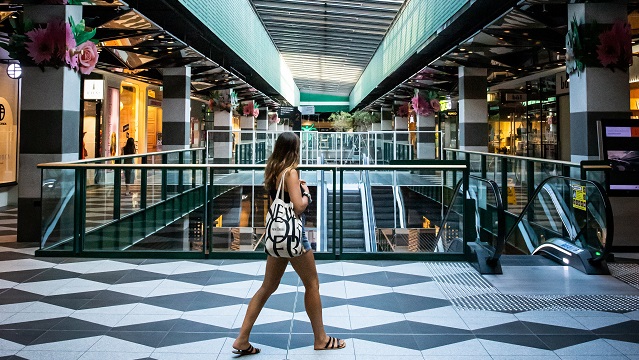Photo by Mitchell Luo on Unsplash It’s natural for those of us who work in retail property to theorise on the future of the sector in the post-pandemic world. Working with shopping centre owners, landlords and tenants to understand how retail assets can adapt to the new normal is critical if we are to help our customers prepare. But through these discussions it’s becoming apparent that the new normal in retail could shift the goalposts for other sectors too. The impact of the retail transact
ransaction should not be under-estimated. It’s the moment where consumers’ money enters, or reenters, the economic picture. From the retail transaction, countless more transactions are triggered and more business mouths are fed.
But what if the parameters of that initial transaction are re-defined, and the environment in which it occurs is re-imagined? It’s worth considering how the new nature of retail might change the needs, functions and obligations of other property assets, like commercial offices, industrial warehouses, distribution centres and more.
If the retail transaction is the catalyst for change, those changes will reverberate through other transactions. Our focus is property, the places where these interactions happen, the physical environment itself.
The environment that was supposed to be left behind by the rise of online shopping. Pre-COVID-19, online retailing was expected in some circles to signal the death of bricks and mortar retail. However, this prediction never materialised because it ignored the social enjoyment people get from retail experiences.
Those experiences are set to change. How, we don’t fully know yet. Perhaps some retailers will increasingly operate their stores as flagships and testing grounds, places where their brand and not the product is the focus of the display, and where people peruse before placing an online order to be delivered to their home.
Will the floorplan change to afford shoppers greater personal space, with social distancing functionality built-in, more sanitation stations and less personal contact with staff?
As more people demand delivery, will we see retail businesses increase their investment in customer fulfilment centres and last-mile distribution? What are the property implications in seeking to meet these growing logistical challenges?
As the pandemic has unfolded, there has been a dramatic slowdown in delivery times. Items that previously took less than 24 hours to arrive on the consumer’s doorstep are now taking up to a week or more. A fix is needed if customer satisfaction is going to depend on large-scale rapid delivery.
Retail’s coming revolution might have direct impacts on properties like distribution and logistics centres but on other asset classes, the influence may be more subtle.
For instance, if the primary purpose of the physical retail store is to shift from product transaction to brand experience, could the interior office environment follow a similar functional shift? Is the office of the future a place where connections are maintained, ideas are explored, courses of action are debated and solutions are decided, for people to then return home and do the grunt-work?
Certainly COVID-19 has shown many businesses that it might not be always ideal, but it’s certainly possible, for teams to work from home.
It’s a reasonable assumption that social distancing functionality will become the new norm not just in retail stores but at the shopping centre level too.
If we assume that the retail food courts and amenities blocks of the future will be designed as less dense spaces with increased personal space, how might these designs influence their commercial office, hospitality and even education counterparts?
Will we see old office spaces be turned into socially distanced co-working spaces, with more hot desks and work-sharing capacity as people mix office-based work with working from home?
What social trends will restaurants, pubs and other properties have to respond to?
There are many unknowns. But retail has a knack for adaptation. Some of our retail customers have already flipped the question: in the post-pandemic world, what new social trends will property owners and tenants have the opportunity to set?
COVID-19 has changed the world and how different sectors and industries re-emerge will decide their future success. We see retail’s re-emergence as having the potential to play an influential role. How deep that influence runs remains to be seen.
Dan Morelli is NSW interiors manager at Mainbrace Constructions. Mainbrace Interiors is the refit, rebrand rollout and refurbishment arm of national retail specialist Mainbrace Constructions.

